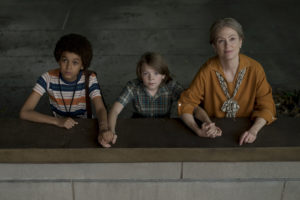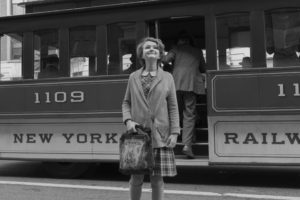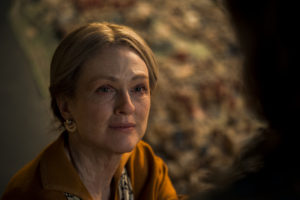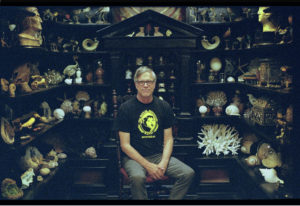In this cinematic telling of the Brian Selznick book, Wonderstruck, simultaneous stories, between Ben, a young Midwestern boy in the 1970’s, and Rose, a young girl in 1920’s New York, converge as a mysterious connection between them is discovered.

Composer Carter Burwell’s earliest conversations with director, Todd Haynes were about, “How much we were trying to highlight the contrast between the periods and the two kids and how much we were trying to draw it together.” Burwell stated, “In the end, the drawing together was the more important role for the music.”
Bringing a sense of magic to the film, Burwell’s score strikes a delicate balance between distinguishing the two tales and bringing them together into a unified musical arc. At the beginning of the film, there are two distinct themes and sounds. The instruments are true to each respective time period. Rose’s sounds are based on percussion, plus woodwinds and strings. For Ben, the music is more about electric guitar, synthesizers and bass.

Burwell chose certain instruments because, “They seemed right for a kid. A lot of these instruments, like glockenspiel and wood block, these are things you encounter in first grade.” Burwell added, “Percussion saved us from the risk of sentimentalizing the characters. There’s no such thing as sentimental glockenspiel or sentimental wood block.”
The two characters come together in New York, particularly when they are together at the Museum of Natural History. Prior to that point, there isn’t a distinction between the two characters musically. “Now it’s playing the journey they are taking together,” shared Burwell.
In distinguishing time periods, Haynes decided Rose’s story would be shot like the silent films of the era – in black and white, without sound. There was no dialogue; not even room tone. The audience would experience the soundless world that Rose inhabits. The only audio would be Burwell’s music.

Burwell explained, “Discussions were about how much like a silent film the music should be. In the end, even though it is a silent film, I don’t think the music I wrote is stylistically like a silent film. It is not melodramatic. I’m really playing her inner life.”
Ben’s entry into a world without sound, comes when lightening shocks him through the telephone. Based upon research, Burwell learned that very few people hear nothing, those who are hard of hearing, absolutely feel sound and vibrations. With the electric buzzing of the score, the filmmakers wanted the music to be suggestive of Ben’s first experience of deafness and the audio disorientation of losing his hearing.
Burwell noted that the movie is also a mystery. The characters are trying to find solutions to puzzles, find things and people that are missing in their lives. The audience is trying to solve the puzzle of why they are seeing these two characters separated by 50 years.
“The music has to withhold a lot of information because it’s a mystery,” revealed Burwell. “I’m trying to hold the audience in a state of anticipation, waiting for the next clue.”
Even from the script stage, it was obvious to Burwell that music was going to have a special role in the film and there was going to be a larger amount of music than normal. Burwell had to figure out how to have a movie with non-stop music, without it becoming “overwhelming, oppressive or overly informative.”

More than any film he has worked on, this one consisted of a lot of trial and error. The first time he heard several cues non-stop, Burwell had to rethink a lot of his ideas. He needed to pull back melodic elements so as not to be repetitious.
“Even after recording the score, Todd and I were still rethinking it. We recorded a bit more in August,” added Burwell. “And if we weren’t releasing the movie, we’d probably still be rethinking it. Sometimes these things happen because there is a problem with the film. That’s not the case here. I think it’s happening because it’s such a unique film with unique musical issues. It just takes a lot of time and effort to figure it out.”





